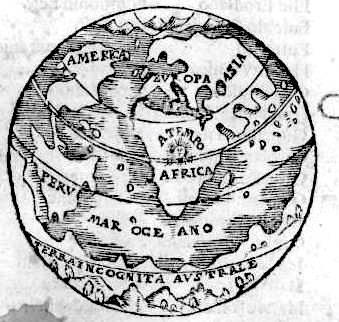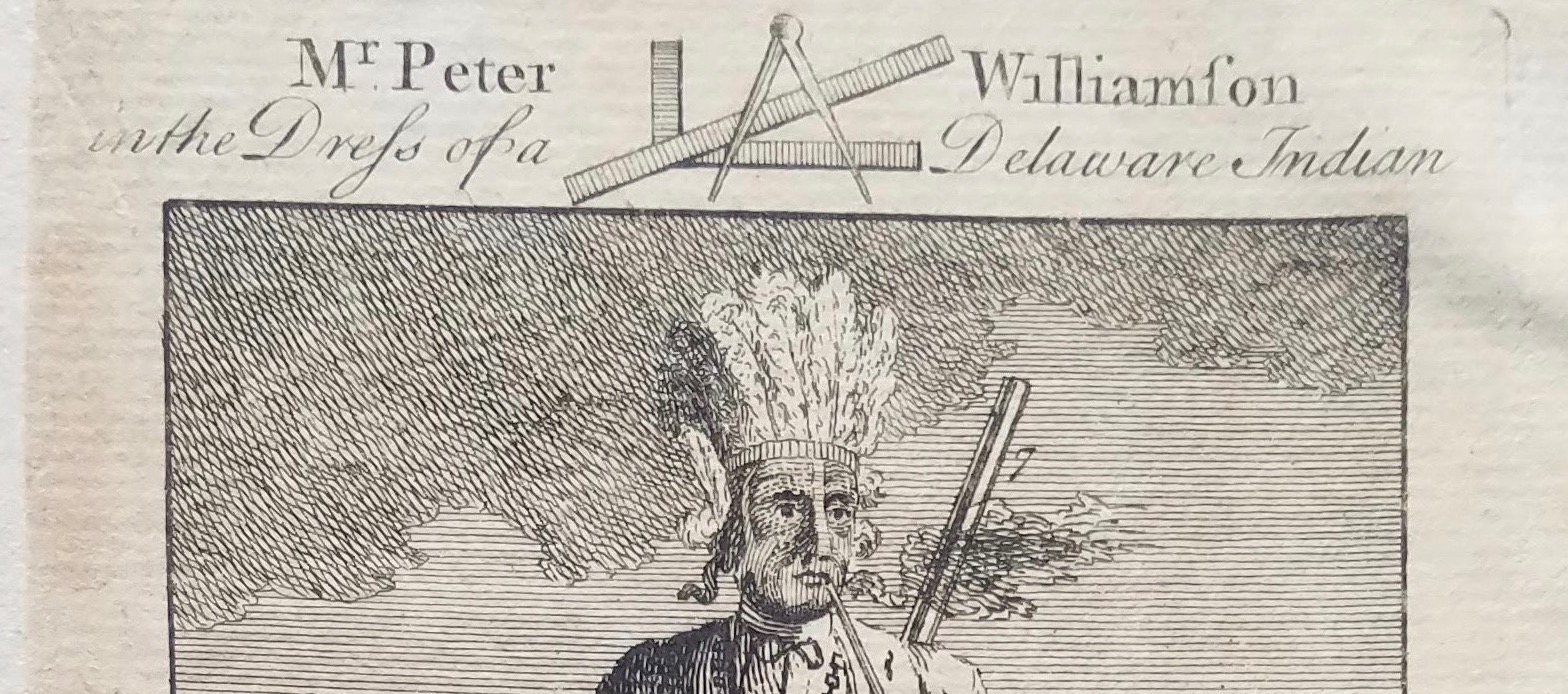Histrionic, mercurial, and frequently violent, French and Indian cruelty is Peter Williamson’s autobiographical account of his multiple kidnappings: first at the hands of an Edinburgh merchant, who forces him into indentured servitude; then by a band of Delaware Indians; and finally, French troops imprison him during the Seven Years’ War. As its title suggests, the narrative is replete with details of gore, horror, and hardship. Notably, however, much of Williamson’s narrative is demonstrably false. It appears the impoverished author fabricated large segments of his tale in a ploy to sell copies: cognizant of the allure of the theatrical and the exotic, Williamson knew the more fanciful his tale, the more it would appeal to a British audience.
The book’s frontispiece attests to the performative aspects of Williamson’s narrative and persona. Citing in its figuration both the frontispiece to Daniel Defoe’s Robinson Crusoe and a widely circulated illustration of a Mohawk warrior, it depicts Williamson in “Indian” dress: he dons an elaborate feathered headdress, wears moccasins for shoes, and brandishes a tomahawk. This tells us a great deal about the proclivities of the English audiences who consumed Williamson’s tale: they wanted a tangible yet familiar image of the Native.
Citation
Peter Williamson, French and Indian cruelty. London: printed for the unfortunate author, and sold by R. Griffiths, 1759.[Catalogue Entry]

